Creating an engaging and innovative mixed reality performance (MRP) requires a shared understandings of the interplay between aesthetic, narrative, and technological possibilities amongst multi-disciplinary teams. If artists, directors, producers, set-designers and performers are to develop meaningful creative dialogues with novel, often experimental, technology, methods are required that enable them to interrogate the material properties of the technology at hand. Similarly, if interaction designers, programmers or hardware engineers are to meaningfully contribute to the development of performances, methods are needed that enable them to understand, and make concrete design judgements in response to the subtle issues and aspirations that drive creative processes and practices. In the words of John Lasseter, circumstances must be brought about wherein “The art challenges the technology, and the technology inspires the art”.
A number of research projects have sought to address the tension between MRPs and the design of interactive technology. Throughout this one-day workshop we intend to further discuss this tension by using Design Fiction to generate scenarios for MRPs. Design Fiction is based on a language of visual imagery and narrative (e.g. imaginary storyboards, scripts, vignettes) that is familiar to performance producers. This provides potential for this method to be successfully incorporated into existing creative processes used to author MRPs. Such design fictions can therefore act as boundary objects that enable technology designers to communicate creative possibilities in a form familiar to creative practitioners, and vice versa. Design fiction also encourages a holistic perspective on the fictional reality that would surround the artefact, providing a framework to explore scenarios involving Internet of Things (IoT) and biological sensors embedded in the environment for a variety of other purposes to be used in MRP. By drawing attention to novel interactive technologies, such as bio-sensors and environmental IoT, we seek to generate design fiction scenarios capturing the aesthetic and interactive potential for mixed-reality performances, as well as the challenges to gain access to audience members’ data – i.e. physiological states, daily routines, conversations, etc.
We invite academics, performers, designers, and artists to submit a 2-4 page position paper in CHI ACM Extended Abstract Format, a 3-5 minute video, or 2-4 page pictorial. Submissions are welcome on related topics such as: mixed-reality performances, design fiction, or sensors data in interaction.
At least one author of each accepted position paper must register and attend the workshop. All workshop participants must register for both the workshop and for at least one day of the ACM CHI conference.
Accepted position papers and demos will be published on the workshop website prior to the start of the event for attendants to read and discuss.
The contributors are invited to submit a 2-4 page position paper in CHI ACM Extended Abstract, a 3-5 minute video on demonstrating your work on one of the main themes, or a 2-4 page pictorial. This is designed to encourage artists, performers, and designers to attend the workshop. The organizers will review the submissions which will be selected based on relevance and innovativeness. The selection process will ensure the presence of different perspectives in order to foster discussion. Accepted submissions will be made available on the website for participants prior to attending the workshop.
Pictorials should be submitted in the CHI ACM Extended Abstract Format and not exceed 4 pages, excluding references. The first page of the submission should include the submission’s title, author(s) and their affiliation(s), and a written abstract of no more than 100 words succinctly describing the background and context of the pictorial. Further written parts known from other conference formats such as Introduction, Conclusion, Discussion, Acknowledgements, and References are optional. The main part of the submission should be an annotated visual composition —see examples of accepted pictorials at DIS ’16.

This is an animated dialog which is useful for displaying information. The dialog window can be moved, resized and closed with the 'x' icon.
These items will be permanently deleted and cannot be recovered. Are you sure?